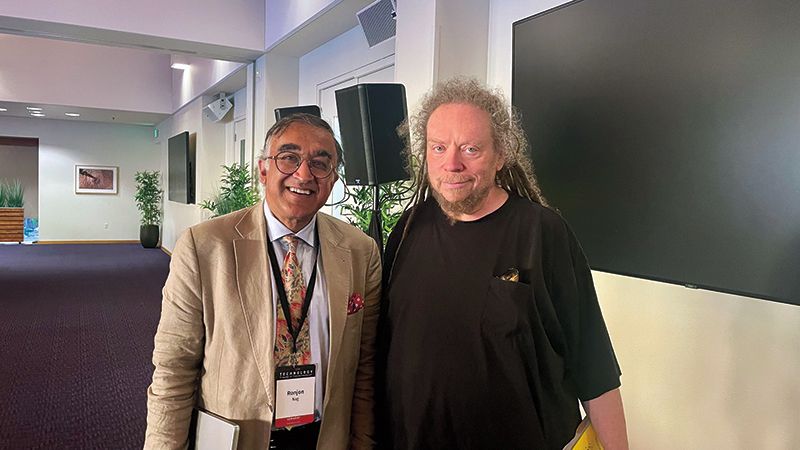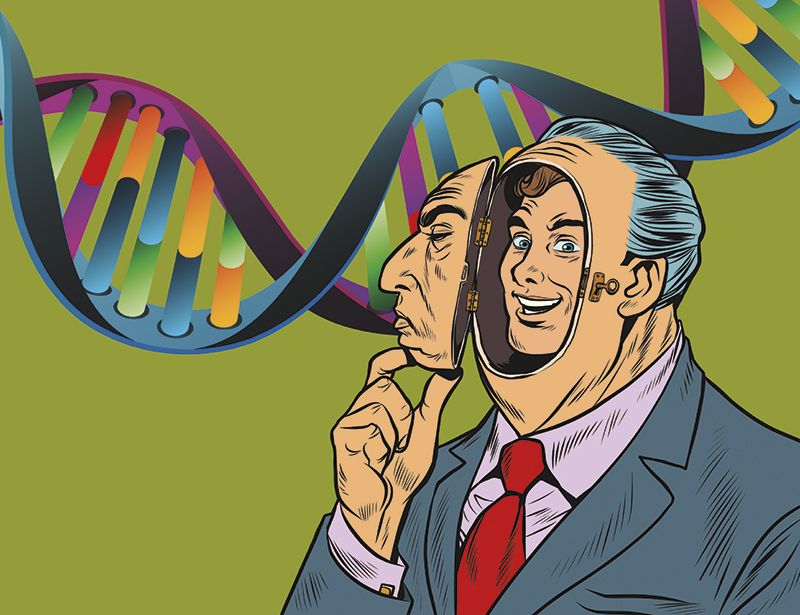It’s Science, Not Fiction – The Pursuit of Being Young Forever
The development of anti-aging biotechnology, longevity tech, and geroscience aims to decode the biological mechanisms of aging and develop innovative solutions to extend our healthspan. Once thought of as impossible, now billionaire visionaries are investing in the idea of human lifespan revitalization.
My first glimpse of technology being used for living healthier and longer was being exposed to the idea of stem cell research and 3D printing technology. Damaged organs and muscles could be revitalized by these discoveries in 2014. I was a freshman in high school, and I had just watched “Transcendence,” starring Johnny Depp. At the time, the idea of ‘immortality’ and humans living a long time seemed very farfetched. So was the idea of Artificial General Intelligence and Quantum Computing. In their infancy stage in 2014, It’s fair to say that these innovations have come a very long way since then.
A decade later, many new startups have emerged. The power of AI and ML has allowed us to discover that working with our biological makeup can increase our healthspan and allow us to age ever so gracefully. In 2023 alone, we have witnessed billionaires making bets on the idea of human revitalization and anti-aging biotechnology.
From implanting nanochips into our brains with Neuralink, to studying simple lifestyle changes, to even tackling aging at a cellular level, suddenly, the sky is the limit. As long as we aren’t uploading our consciousness into quantum computers like Johnny Depp, there are reasons to be optimistic about the human species. The goal of this research isn’t necessarily about living forever. The field focuses on aging gracefully and the promise of living to our fullest capacity.
It starts with changing the narrative on aging. Instead of looking for treatments for aging-related diseases, the focus shifts towards solving the root cause of most diseases – natural aging. In other words, investing in two emerging fields: longevity tech and geroscience. I know I am blabbering out jargon but bear with me. It is about to get more bizarre and more Sci-Fi. I promise you.
Longevity is the idea of prolonging humans’ optimal health and well-being, resulting in an overall increase in the human lifespan. Longevity science strives to decode the biological mechanisms of aging and develop innovative solutions to slow, halt, or even reverse the aging process, extending our healthspan – time spent in good health.
In contrast, geroscience focuses on the relationship between aging and diseases. The multidisciplinary field seeks to understand the genetic and cellular mechanisms that make aging a major risk factor and a driver of common chronic conditions.
In essence, geroscience and longevity are two sides of the same coin. Where one studies what is the cause while the other studies what can be done. “It’s a fascinating and rapidly evolving field with the potential to dramatically improve our quality of life as we age.” – Dr. Ronjon Nag’s AI on Soopra.AI
In a talk hosted at Stanford University last year, Dr. Nag briefly touched on the optimistic outlook on human life with the acceleration of AI and biosciences. In the last few months, Dr. Nag has been hosting lectures on the field of longevity sciences for the sole purpose of educating on the next frontier of innovation and advancements of humans as a species. Talking to his AI avatar on Soopra.AI, Dr. Nag (in AI form) says, “As we delve deeper into the biology of aging, we’re beginning to uncover ways to slow down the process and even reverse some aspects of it.”
Although one of the recent pioneers, Dr. Nag is not the only key player in this pursuit of longevity and healthy aging. Turns out many of our iconic tech billionaires are also investing in the field of longevity. From cellular-level therapies to experimenting with lifestyle changes, the likes of Sam Altman, Jeff Bezos, Brian Johnson, Peter Thiel, and the Google co-founders are fueling momentum for this movement.
Longevity and age reversal are still in their early stages, but new research shows significant promise. A very promising outlook for the general population, as life expectancy has increased over the years, and the U.S. alone has an aging population. Don’t believe me? Search it up. The seniors of our community are more active than ever.
The longevity field is a multi-faceted one with an open canvas for potential solutions. Researchers and experts agree that the field is still uncharted territory for many, and there is more than one way to stay forever young. Let’s get into the beat!
Starting with the obvious, lifestyle changes can play a significant role in slowing down the aging process. Whether medical experts, or the typical elderly at a party, we are constantly reminded to eat healthier and cleaner. Certain vitamin supplements are preferred over others. Lastly, the evergreen push to stay active and exercise. There are quite a few examples of this regiment working well. Having a routine and a certain lifestyle works for Brian Johnson, Jack Dorsey, and David Murdock. For the sake of this article, we can look at Brian Johnson’s ‘Blueprint,’ who is devoting his whole life to being an 18-year-old again, biologically.
Now for those who are wondering about miracle treatments for reversing age and longevity, don’t worry. There is hope for y’all as well. The essence of longevity and geroscience isn’t just to force us into a certain strict regimen filled with supplements, workouts, and diets. The field is also looking into altering our biological processes to increase our healthspan. Sounds Sci-Fi? Brace yourself because this gets very technical.
Mitochondrial Rejuvenation presented by Mitrix Bio, experiments with the idea of “replacing the batteries” of our cells. It has been hammered into our heads that the mitochondria are the powerhouse of the cell. Current research by Mitrix suggests that the powerhouse loses energy over time which is part of the cause of aging and related illnesses. Mitrix strives to transplant energized mitochondria through “mitlets” – mobile mitochondria encased in extracellular vesicles that run through the bloodstream and various organs.
Autophagy is a natural process in our cells that helps them stay healthy. Scientists are researching ways to enhance this process with a pill to slow down aging. While existing medications like rapamycin and metformin show promise, there is no official drug available yet that targets this process.

The idea of cellular reprogramming is to teach old cells young tricks again. This can be achieved by partially reprogramming them into a slightly younger state using four well-known Yamanaka Factors. However, it’s logistically tricky and experimentally hard to accomplish this kind of remodeling in a way that doesn’t potentially cause health issues. The suggestion is to start very slowly by extracting cells from people’s ears or knee joints, partially reprogramming them, and then inserting them back into people once they’ve been deemed safe for treatment. If these initial experiments help with age-related issues, more advanced treatments could be tried.
Plasma therapy, which involves diluting blood plasma with saline has shown promising rejuvenation results in mice. The procedure has been found to improve age-related issues such as inflammation, muscle and liver health, and brain cell formation. Research in humans is ongoing and suggests that plasma therapy might work for non-rodents too.
Approaching longevity with the lens of geroscience, another area of study is telomeres – the caps at the end of our chromosomes that get shorter as we age. There is a correlation between the telomeres getting shorter and an increased risk of age-related diseases. Since the last decade, scientists have been exploring ways to lengthen these telomeres which could potentially reverse some aspects of aging.
Another area of interest is senescence, or the process by which cells lose their ability to divide and function. Cells, because of senescence, become dormant, accumulate, and may contribute to age-related diseases. Effective solutions could come in the form of senolytic drugs that selectively destroy senescent cells, and interventions that stimulate biological mechanisms for clearing out these cells or rejuvenating them.
Many of these anti-aging discoveries have become a reality thanks to the boon of AI and ML. Longevity research and geroscience require vast amounts of data analysis. AI helps researchers identify patterns, and make predictions, which could potentially lead to new interventions to slow or even reverse aging.
While the research is promising, the overall longevity field is still emerging. We’re still a long way from finding a foolproof way to reverse aging. Many biological and social factors come into play with the idea of advancing the human healthspan. Societal implications such as inequality and resource management will become a key challenge to the pursuit of extending human life.
The territory is still uncharted, and the field is getting more invigorating as we patiently wait.
The narrative on aging is changing. According to Dr. Nag (AI Avatar), “The future of aging could look very different from what we’re used to. It’s a future filled with potential, but also one that requires careful thought and planning.” Various reports suggest that anti-aging agents may be a reality for our species by 2030. I think the common crowd can expect reliable anti-aging treatment by 2040. But hey, who cares what I think? I am just a mere witness to where the human species is headed.


